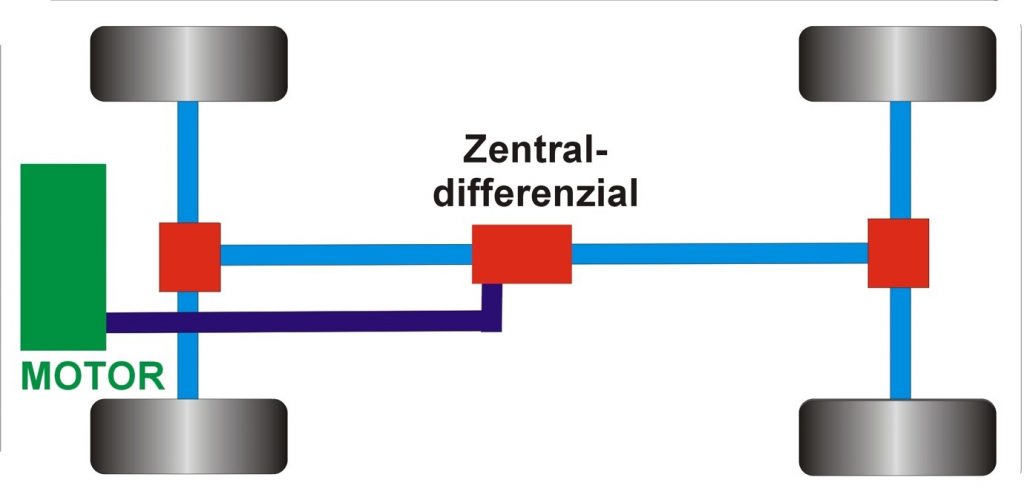Photo by Nickel_Bell via iStock
Even if you aren’t a car enthusiast, you’ve probably heard the terms “all-wheel-drive” and “four-wheel-drive” as well as “4×4” or “4WD” a million times. You’ve likely heard of the AWD vs 4WD debate as well.
However, experienced off-road aficionados know that those terms are not synonymous, and there is a big difference between awd and 4wd. Of course, there are many similarities between all-wheel-drive and four-wheel-drive since both are designed to provide the vehicle with traction and grip from all four wheels.
The difference is in design and engineering and in use since two systems act differently, both in off and on-road conditions. Over the years, ignorant wannabe car journalists managed to interchange these terms creating confusion, but we are here to explain which is which and what are the difference between all wheel drive and 4 wheel drive.
AWD vs 4WD: Four-Wheel-Drive Has a Longer History
Let’s start with the older of the two, the four-wheel-drive. Invented a long time ago, a four-wheel-drive is a drive train concept that includes a transfer case designed to split the axles’ power. When the 4WD mode is chosen, both of the axles get the same amount of power at the same time, providing the vehicle with exceptional traction, especially on mud, snow, or sand.
The construction of the 4WD systems is more rugged and is used in heavy-duty vehicles and serious off-road machines. Most of the 4WD comes as part-time four-wheel-drive, which means they are 2WD in standard-setting, and you can engage 4WD (with Hi or Lo gearing) when you need extra grip.
Pros and Cons of 4WD
The biggest pro of the four-wheel-drive is the fact that this is the ultimate drivetrain layout if you want to go off-road. The power delivery and durability are still unmatched, and all dedicated SUVs or trucks use it. It has a somewhat more straightforward construction, with the transfer case being the most crucial part of the system.
As fantastic as the 4WD is off-road, it is pretty clumsy in on-road driving. Having all four wheels turning with the same speed is essential on the trail but on pavement and while turning puts unnecessary strain on the components. Simply, when you turn, inner wheels turn fewer times than the outer. When you are on the loose surface, it doesn’t matter, but it could make the vehicle difficult to control when you are on the pavement. That is why when you are on the street, you should always choose 2WD.
The latest 4WD systems are more sophisticated and allow the transfer case to adjust the power between the axles in order to improve drivability in everyday conditions.
Difference Between AWD and 4WD: All-Wheel-Drive is More Popular
The AWD technology is newer than the 4WD and far more popular among the buyers. First, they are cheaper to produce and installed on a broader range of vehicles, from economy hatchbacks and sedans to full-size crossovers and SUVs. Second, AWD offers better on-road manners and are more suited to passenger vehicle use.
The “party trick” of the AWD systems is the central differential, which distributes power between the axle over viscous couplings or clutches. The all-wheel-drive can be engaged or disengaged without the driver’s input, and the system can determine when there is a need for additional grip and send it to the axle (or even a single wheel) in need.
The AWD systems are designed to be either full-time or part-time all-wheel-drive, and most modern vehicles are part-time AWD. Since the AWD is mostly installed in civilian vehicles and ordinary models, in 95% of driving, there is no need for all-wheel-drive traction, so the system switches to front or rear-wheel-drive to save fuel and reduce wear.
Pros and Cons of AWD
There are numerous advantages of all-wheel-drive systems, with the first being available in several forms, affordability, and usability. The AWD can easily be engineered as an addition to standard front-wheel-drive cars with transversally-mounted engines. Since it is better suited for “civilian” use, the maintenance and repairs are usually significantly cheaper than a comparable four-wheel-drive train.
Even though the modern AWD systems are surprisingly capable, they are still not considered as competent and durable as the classic four-wheel-drive. That is why they are generally avoided by serious off-road enthusiasts and not installed in dedicated off-road vehicles.
Learn More:
All Wheel Drive vs 4 Wheel Drive: Which is Better?
Although both systems are designed to provide you with additional traction and control, they do not perform identically, nor are they used for the same purposes. The question that is often asked is better, 4WD or AWD, and the answer is – depending on the purpose.
If your vehicle is an everyday SUV that is driven on the street and your only concerns are snow or icy roads, then a modern and electronically controlled all-wheel-drive system will do just fine. It will provide you with control when needed and still be fuel-efficient and easy to use.
However, if you spend all of your free time on the trail and you enjoy tackling the most challenging terrains, the four-wheel-drive is still an irreplaceable drive train configuration. Especially if you tow a trailer or get stuck. When your wheels are half-buried in snow, mud, or sand, the 4WD really shines since the system will send an equal amount of power and, at the same time, which will get you out of the jam in no time.








